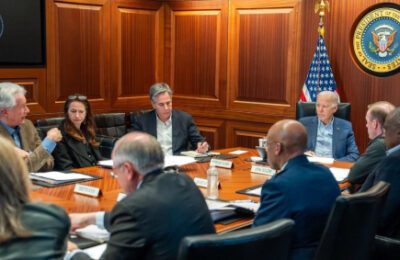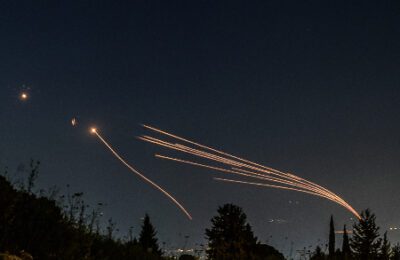 CRACOW Pawel Sawicki gets to his desk every morning by 7, but he works no regular office job.
CRACOW Pawel Sawicki gets to his desk every morning by 7, but he works no regular office job.
Sawicki is an information officer at the Auschwitz-Birkenau State Memorial and Museum, the sprawling complex in southern Poland that encompasses the largest and most notorious Nazi death camp. More than 1.1 million people, mostly Jews, were murdered there.
I look out my window and see barbed wire and barracks, Sawicki told JTA. Its never just a job. You have to find ways to deal with the emotions.
Auschwitz is a place where history, commemoration and, increasingly, mass tourism collide. The iconic symbol of the Holocaust, Auschwitz is also a major tourist attraction the most-visited museum in Poland.
Its complex identity Auschwitz is also a sacred site of martyrdom for Catholic Poles has made it an emotional, and sometimes political, battleground of memory since the end of WW II.
The latest instance erupted earlier this month, when the museums effort to help visitors during an extreme heat wave by installing misting showers provoked outrage among those who felt they invoked the showers at Birkenau that spewed poison gas.
Facing a storm of criticism, the museum defended its actions. Something had to be done to help visitors cope with the sweltering temperatures, museum officials wrote in a Facebook post.
The museum also pointed out that the Nazi gas chamber showers where nearly one million were killed by Zyklon B poison gas looked nothing like the misting sprinklers.
Zyklon B was dropped inside the gas chambers in a completely different way through holes in the ceiling or airtight drops in walls, the museum said.
As the heat wave abated, the misting showers at Auschwitz were removed.
The site is so complicated, with so many conflicting aspects, that nothing is easy, said Tomasz Cebulski, a historian, tour guide and educator whose doctoral work was on the museums political and international aspects.
CREATED BY an act of the Polish Parliament in 1947, the memorial museum comprises two parts the Auschwitz I camp, entered through the iconic Arbeit Macht Frei gate, and the vast area of Auschwitz II, at Birkenau, about two miles away.
The museums permanent exhibition, displayed in several of the brick barracks in the Auschwitz I camp, opened in 1955 and has changed little since.
It includes displays of original artifacts and masses of material left by victims: suitcases, eyeglasses, prosthetic limbs, clothing, kitchen utensils, even hair shorn from victims heads.
Birkenau is a memorial site, a vast open area marked by the grim ruins of the crematoria and barracks and bisected by railway tracks. At one end stands a large monument to victims erected in the 1960s; at the other, the looming entry tower and siding where trains carrying victims were unloaded.
One of the museums key challenges is conserving the sites deteriorating buildings, ruins, archival holdings and artifacts.
The museum is a state-run entity. The Polish government provides more than one-third of the approximately $15 million annual budget, and the EU also contributes some funding.
But more than half of the budget is generated by the museum itself through visitor fees for guides, sales of publications, onsite business concessions and other income sources.
In 2009, a special Auschwitz-Birkenau Foundation was established to amass and manage a perpetual endowment fund of $120 million whose income is specifically earmarked for long-term conservation.
Some 35 states have pledged or donated funds to the endowment, including more than half of the sum from Germany alone.
The museum employs 339 staffers, including security personnel, educators, archivists, preservationists and technology specialists. They face a daunting task, said Emory University Holocaust scholar Deborah Lipstadt.
They are both a museum to educate and also a memorial. And they are the major site of destruction, she said.
There are very tough questions about preservation that are being dealt with in a most professional and sensitive manner, Lipstadt said. For example, the remnants of the gas chambers are collapsing. Do you go in and shore them up? Or let them collapse? Do you stop the hair from disintegrating or not?
A DRAMATIC upsurge of visitors in recent years has put serious strains on the fragile infrastructure at the site.
A record 1.53 million people visited Auschwitz-Birkenau in 2014, up from less than 500,000 in 2000. This year, more than one million toured the site in the first seven months of the year.
The growing numbers of visitors prompted the museum to implement new visitor regulations and security measures in January. For the first time, there is a ban on bringing backpacks or other large bags into the site.
Basic entrance to Auschwitz-Birkenau is free. But during peak hours entrance is now limited, and visitors must pay to tour the site in groups led by one of the nearly 300 guides, working in 18 languages, who have been licensed by the museum after specialized training programs, often in cooperation with Yad Vashem, Israels Holocaust museum.
Because of their large numbers, many visitors must wait hours before they can enter the site.
That has helped bolster visits to the nearby Auschwitz Jewish Center, a museum and prayer and study center established in 2000 and located about two miles away in the town of Oswiecim.
Before the Holocaust, most of Oswiecims residents were Jews, and part of the museum is located in Oswiecims sole remaining synagogue, Chevra Lomdei Mishnayot.
The Oswiecim museum is dedicated to educating about the Holocaust and Polish Jewish heritage, and there is some cooperation between it and the Auschwitz-Birkenau State Memorial and Museum on educational programs, including for university fellows, US cadets and midshipmen, and law-enforcement personnel.
But the center at Oswiecim gets only a small fraction of the visitors to Auschwitz-Birkenau, according to the director of the Oswiecim museum, Tomasz Kuncewicz.
It is a logistical challenge how to handle the immense numbers so that they can see the exhibits comfortably, Sawicki said of Auschwitz-Birkenau.
With so many visitors, enhanced security measures were inevitable. We think of both the security of the site and the security of visitors.
A $26 million off-site visitors center, due to open in the next two years, is expected to help, and a new education center is also planned.
The museum also has embarked on an 11-year, government-funded project to revamp its permanent exhibit in a way that will modernize the presentation and reflect current scholarship while at the same time preserve the authenticity of the site and material on display.
I was for years very critical of mass tourism to Auschwitz, said Cebulski, the historian. But lately Ive come to feel that we should see it as an opportunity. To have 1.5 million people be exposed to this original historic site, even if they spend only 10 minutes thinking of what Auschwitz is, it accomplishes something.
















